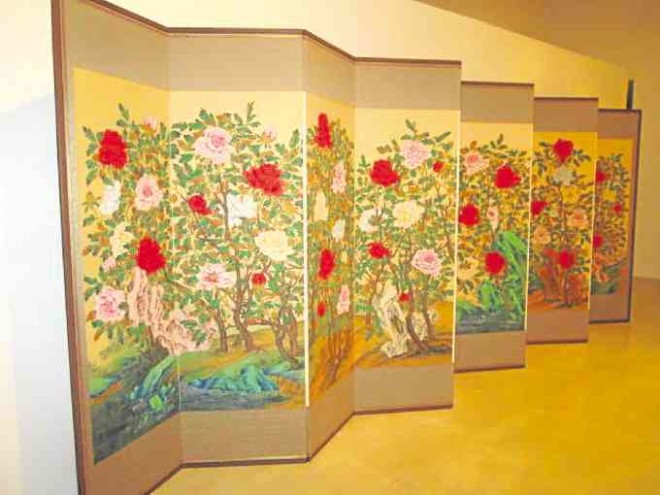
Some people think history is a boring subject. Who wants to memorize names and a long list of dates from the past? But what if history is linked to modern society, most specifically to pop culture?
Organized by the Korean Cultural Center of the Philippines, “Opulence: The Art of Korean Royal Palace” aims to introduce Korean history to the country. It offers various interpretations of historical Korean art, especially the Korean Royal Palaces.
The artworks were created by artists from National University of Cultural Heritage (NUCH), a university in Korea which teaches young artists to incorporate historical art to modern art.
In fact, the KCC doors were transformed to look like the entrance of ancient Korean houses. Yet the inside was an ordinary modern classroom with steel chairs and desks, even projectors.
Korean history in pop culture
South Korea is known for actively incorporating their history in pop culture. Well, it is easier to remember the names of royals while picturing the face of your favorite Korean actor.
Remember those folding screens with embriodered silk where our heroines commonly hide themselves during crunch times? But the most memorable scene starred by this ancient room divider was when Bu Yong hid her final, dying message on a folding screen designed with a butterfly to the Crown Prince in time travel drama “Rooftop Prince.”
There were also portraits of modern Joseon royals including King Sung-Jong, King Go-Jong and King Cheol-Jong.
Sounds familiar? Maybe you have heard some of their names somewhere in Korean movie and TV dramaland. Here’s a clue: King Go-Jong was also called Yi Geum as a child. Yup! He is King Su-Jong and Suk Bin’s adorable son in the popular historical drama “Dong Yi.” Although he was only shown in the last few episodes, we were captured by his cuteness and intelligence.
Like protagonist Suk Bin aka Dong Yi (Han Hyo-jo) had planned, he ascended to throne after his sickly elder half brother died. Although his ascension to the throne was rather controversial, he was considered as one of the longest reigning monarchs in Korean history. His accomplishments include successful economic, educational and political reforms which made Joseon flourish under his sovereign.
The only major flaw in his reign was the death of his son, Crown Prince Sado, whom he ordered to be executed due to mental illness. The controversial execution was featured in many historical Korean dramas as well. He is the father of King Jeong-Jo, popularly called as Yisan in “Lee San, The Wind of the Palace”
Across the portraits are more paintings related to Korean palaces. A landscape of the Deoksugung Palace, which originally belonged to the older brother of King Seongjong and the courtyard of Changgyeonggung Palace, which was built by the great King Sejong for his retiring father.
King Sejong was remembered as one of the most famous rulers in Korean history who introduced the Korean alphabet, hangul. We saw him in “Deep Rooted Tree” portrayed by actor Han Suk-kyu while his teenage counterpart was played by “Descendants of the Sun” actor Song Joong-ki
There was also a display of Korean traditional masks, which we have seen in various dramas. The most popular of which was the Japanese colonial drama “Bridal Mask,” about a freedom fighter working as a Japanese police officer starred by Joo Won from “Baker King, Kim Tak-gu” and “Good Doctor.”
“We have high hopes that this exhibit would be a meaningful step in introducing Korea’s history and traditions to the international community,” said KCC director Oh Choong Suk. —CONTRIBUTED
Exhibit runs until Nov. 19 at 2/F, Mancor Corporate Center, Korean Cultural Center, Bonifacio Global City, Taguig; 9 a.m.-6 p.m., except weekends and holidays. Admission is free.